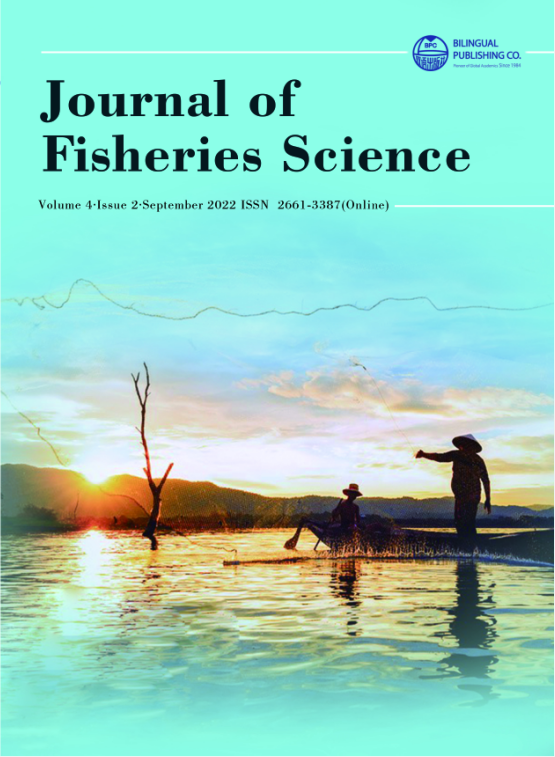Aspects of Impacts of Proposed Badagry Deep Sea Port on the Ecosystem and Livelihood of Fishing Communities in Badagry, Lagos State, Nigeria
DOI:
https://doi.org/10.30564/jfsr.v4i2.4414Abstract
Federal government of Nigeria, in collaboration with Lagos State Government proposed development of a seaport in Badagry. This research examined and documented the current state of the ecosystem and livelihood of thirteen communities that will be impacted by the proposed deep-sea port. Qualitative and quantitative approaches were used for the study. Review of secondary data was used to investigate the demographic data of the community while Participatory Rural Appraisal was conducted for 300 households in the communities. Majority of the sampled respondents were in the age range of 45 years and above with females (60%) more than males (40%) in the entire population sampled. Educational levels of the respondents are relatively low. The majority of the sampled households have multiple livelihood systems that keep them engaged throughout all seasons of the year. Capture fisheries is the major occupation in the study area and it is complemented with aquaculture. Existing groups are not strong enough to operate as a pressure group to influence policies and regulate market prices, which has been identified as a major limitation in the study area. There was no regular training or capacity building. Hence the groups were not operating as a business enterprise and could not expand or increase capacity. Consequently not able to contribute significantly to poverty alleviation and increase employment opportunities in their localities. This document will serve as one of the guides to the government for decision-making and compensation to the communities.
Keywords:
Seaport, Livelihood, Communities, Badagry, Decision makingReferences
[1] Hodder, B.W., 1962. Badagry 1:Slave Port and Mission Center in Nigeria. Geographical Journal. 5(2), 75-86.
[2] Simpson, A., 1994. Badagry: The Religious function of Agbalata Market. G.O. Ogunremi, M.O. Opeloye and Suju Oyrweso editors-Badagry: A study on history, culture and tradition of Ancient city.Ibadan Rex. Publication, pp. 305-313.
[3] Simpson, A., 2004. Oral Tradition and Slave Trade in Nigeria,Ghana and Bennin,Paris:United Nation Educational Scientific and Cultural Organization.
[4] Zann, L.P., 1995. Our sea, our future: major findings of the State of the Environment Report for Australia. Great Barrier Reef Marine Park Authority, Ocean Rescue 2000, Department of the Environment, Sport and Territories, Canberra.
[5] Edgar, G.J., Barrett, N.S., Graddon, D.J., 1999. A classification of Tasmanian estuaries and assessment of their conservation significance using ecological and physical attributes, population and land use.Tasmanian Aquaculture and Fisheries Institute, University of Tasmania, Technical Report No. 2.
[6] Coleman, N., Parry, G.D., Cogen, B.F., et al., 1999.Port Phillip Bay: biology, habitats and disturbance history. Hewitt, C.L., Campbell, M.L., Thresher, R.E. and Martin, R.B. (eds.) Marine biological invasions of Port Phillip Bay, Victoria. Centre for Research on Introduced Marine Pests. Technical Report No.20. CSIRO Marine Research, Hobart.
[7] Hewitt, C.L., Campbell, M.L., Thresher, R.E.,et al.,1999. Marine biological invasions of Port Phillip Bay, Victoria. Centre for Research on Introduced Marine Pests. Technical Report No. 20. CSIRO Marine Research, Hobart.
[8] Winstanley, R., 1995. Issues in the Victorian marine environment. Zann, L.P. (ed.) Our sea, our future: major findings of the State of the Environment Report for Australia, Technical Annex 3: State and Territory Issues. Great Barrier Reef Marine Park Authority, Ocean Rescue 2000, Department of the Environment, Sport and Territories, Canberra.
[9] Mekuleyi, G.O., Anetekhai, M.A., Aderinola, O.J.,et al., 2019.Environmental Health Status of Some Aquatic Ecosystems in Badagry Division of Lagos State, Southwest, Nigeria. International Journal of Ecotoxicology and Ecobiology. 4(4), 93-102.
[10] Yamane, T., 1967. Statistics: An Introductory Analysis, 2nd Ed., New York: Harper and Row.
[11] Nathan, A., Nathan, J.B., Philippe, L.B., et al., 2021. Oil, fisheries and coastal communities: A review of impacts on the environment, livelihoods, space and governance. Energy Research and Social Science. 75, 1-15.
[12] Victor, A.A., 2014.A Framework for Determining the Compensable Value of Damages Due to Contamination to Wetlands in the Niger Delta of Nigeria.A Thesis Submitted in Partial Fulfilment of the Requirements for the Award of the Degree of Doctor of Philosophy of the University of Salford, School of the Built Environment, pp. 1-367.
[13] IFRC, 2010. Guidelines for livelihoods programming.A report prepared by International Federation of Red Cross and Red Crescent Societies, Geneva.
[14] World Bank,1988. Resettlement in Development Projects, World Bank Technical Paper No. 80, Annex 1 (Washington, D.C, U.S.A.).
Downloads
Issue
Article Type
License
Copyright © 2022 Gabriel Olarinde Mekuleyi

This is an open access article under the Creative Commons Attribution-NonCommercial 4.0 International (CC BY-NC 4.0) License.
Copyright and Licensing
The authors shall retain the copyright of their work but allow the Publisher to publish, copy, distribute, and convey the work.
Journal of Fisheries Science publishes accepted manuscripts under Creative Commons Attribution-NonCommercial 4.0 International License (CC BY-NC 4.0). Authors who submit their papers for publication by Journal of Fisheries Science agree to have the CC BY-NC 4.0 license applied to their work, and that anyone is allowed to reuse the article or part of it free of charge for non-commercial use. As long as you follow the license terms and original source is properly cited, anyone may copy, redistribute the material in any medium or format, remix, transform, and build upon the material.
License Policy for Reuse of Third-Party Materials
If a manuscript submitted to the journal contains the materials which are held in copyright by a third-party, authors are responsible for obtaining permissions from the copyright holder to reuse or republish any previously published figures, illustrations, charts, tables, photographs, and text excerpts, etc. When submitting a manuscript, official written proof of permission must be provided and clearly stated in the cover letter.
The editorial office of the journal has the right to reject/retract articles that reuse third-party materials without permission.
Journal Policies on Data Sharing
We encourage authors to share articles published in our journal to other data platforms, but only if it is noted that it has been published in this journal.




 Martins A. Anetekhai
Martins A. Anetekhai

